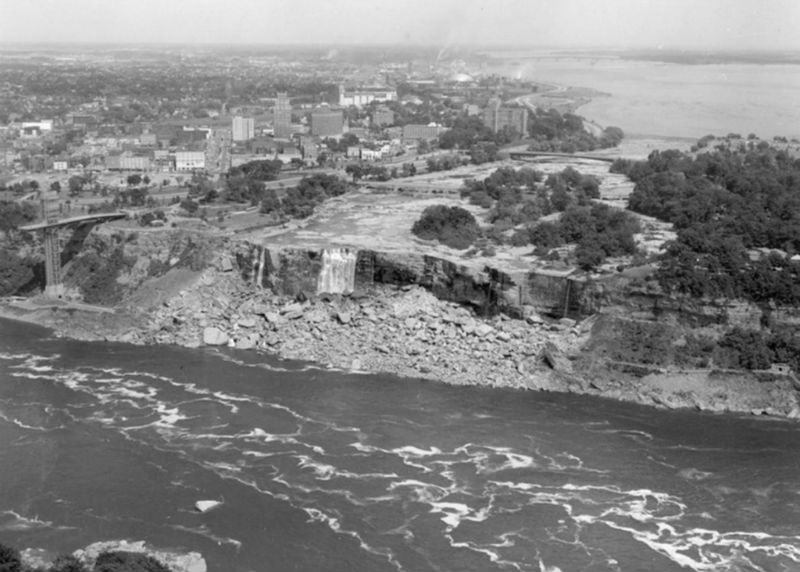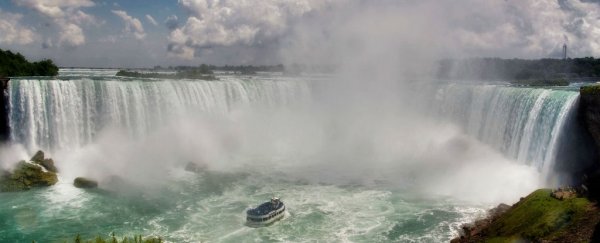Few landmarks are as iconic as the Niagara Falls - a group of three waterfalls spanning the US and Canadian border - but we're used to seeing it in full flow as it churns through 168,000 cubic metres of water every minute. As the result of a proposal from the New York State Parks and Transportation Department, that deluge might be temporarily turned off in the near future, giving us a rare glimpse of the rocks and geology underneath.
The reason New York's state agencies want to shut off the falls is to repair two 115-year-old stone bridges, as National Geographic reports. The bridges link the town of Niagara Falls, with the state park islands in the middle of the waterfalls themselves, and the engineers and officials involved say they'll almost certainly have to reroute some water in order to get enough access to the bridges.
It would be a dramatic move, but it wouldn't be unprecedented. Back in 1969, water was directed away from the US side of the falls so army engineers could study how the landscape of the waterfalls was eroding.
During this dry spell, the riverbed was irrigated manually to maintain a steady level of moisture, and many pictures were taken of the newly exposed rocks.
According to reports at the time, tourists turned up in droves to see the unique sight, as bucket-loads of coins thrown into the water down the years were removed. As Rose Hackman at The Guardian notes, two cadavers were also found, one of which was never identified. Which begs the question: what could turn up this time?
 Niagara Falls Ontario Public Library
Niagara Falls Ontario Public Library
A public hearing has been held to investigate possible approaches to repairing the bridges, with the dewatering period set to last either five or nine months, depending on which proposals are accepted.
As well as giving scientists and engineers a rare chance to study the layout of the falls, it could also boost the number of tourists flocking to the location. Park agencies say they are keen to give visitors as much access to the stripped site as possible.
However, some are against the plans, pointing to the existing interference with the river (used to generate hydroelectricity) and the consequences of the 1969 stoppage, when almost all of the trees lining the riverbank died of thirst within a month.
If the plans do indeed get the go-ahead, the flowing river is going to be re-routed at some point in the next two to three years, New York state representatives say.
One man who won't be visiting is Seneca Casino employee Rick Lecksell, who remembers the 1969 dewatering. "It was just a lot of rocks," he told The Guardian.
